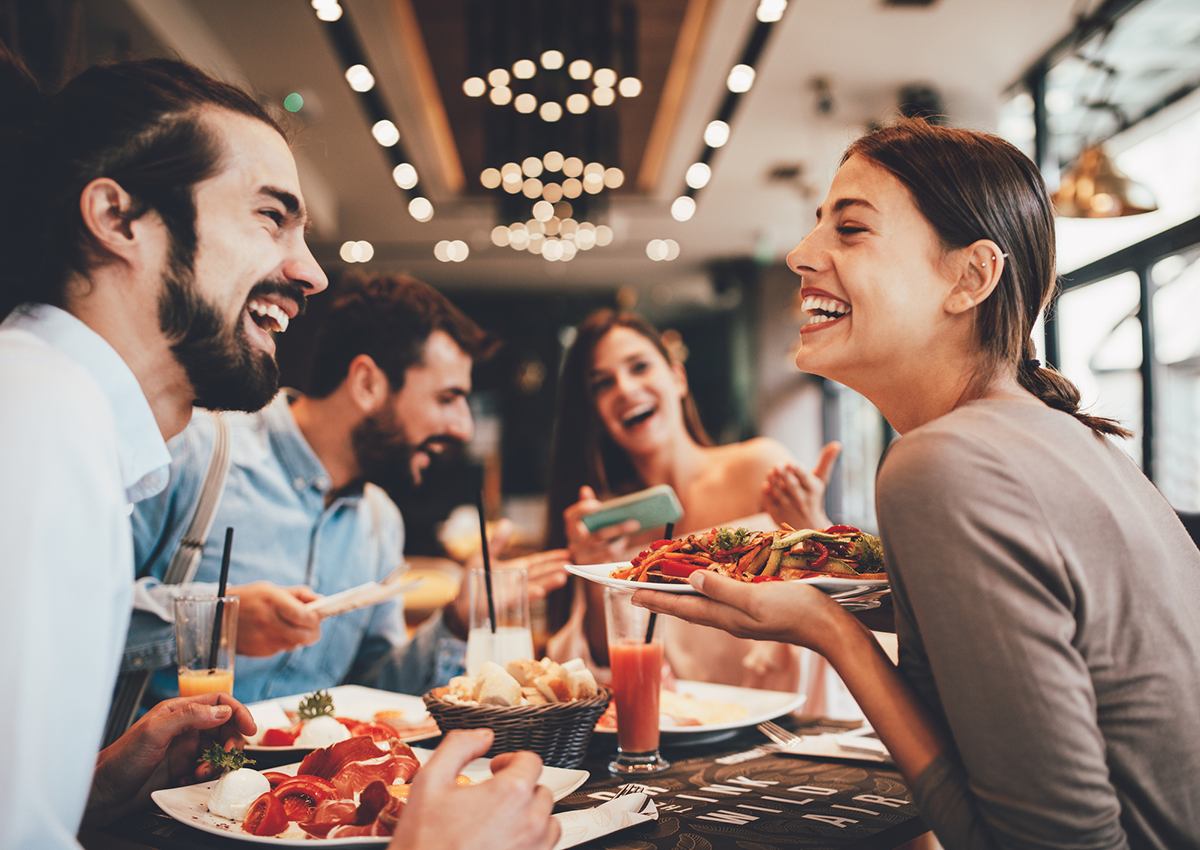Customer loyalty is essential to running a successful business. In fact, according to the Harvard Business Review, recruiting new guests can cost up to 25 times more than repeat visitors.
A strong customer loyalty program should utilize the three Rs: Rewards, relevance, and recognition.
While rewards are the foundation of these systems, providing tangible payoff for brand loyalty and understanding what your customers really desire is the best way to stay relevant. But customers also want to feel recognized, and your restaurant loyalty program can provide the acknowledgement they crave.
Today, we’re diving into the three Rs of customer loyalty programs to help you optimize your system and keep customers coming back for more.
What’s cover:
The importance of loyalty programs in the restaurant industry
If you’re a restaurant owner, you probably already understand the competitive nature of the industry. Fortunately, a carefully crafted customer loyalty program can set you apart from the competition. Here are a few ways these systems can boost your brand.
Customer retention
Since the restaurant industry includes tons of variation–fine dining, fast-casual, quick-service, and so on–it’s hard to pin down average customer retention rates. However, experts suggest aiming for a retention rate of 70% or more.
According to the National Restaurant Association’s Restaurant Technology Landscape Report 2024, 52% of adults say they currently participate in a loyalty or reward program at a restaurant, coffee shop, snack place or deli.
Increased revenue
A classic research study by Fred Reichheld of Bain & Company found that increasing customer retention rates by a mere 5% can increase profits from 25% to 95%.
These staggering figures highlight how a small change can make a huge impact on your bottom line.
Competitive advantage
While a killer menu and excellent service will put your restaurant in a great position, it takes more than just good food and solid employees for an eatery to thrive.
A great restaurant loyalty program can help you forge valuable relationships with your customers and take the partnership beyond simple transactions. As your customers begin accumulating points, climbing the tiers of your system, and raking in discounts, free items, and other perks, they’ll be more likely to put your establishment on the short list of spots to grab dinner.
#1 Rewards
Rewards are the backbone of most successful customer loyalty programs. Many offer points for each purchase, which members can redeem for discounts or free menu items.
However, innovation is key to a successful system, so consider building upon the standard points protocol to set yourself apart from the competition.
Innovative reward structures
While earning deals and discounts is a great way to encourage repeat business, a basic system won’t take you as far as a cutting-edge approach. Customers want to be blown away by loyalty programs, but that doesn’t mean these systems need to be complex. In fact, ease of use is a major selling point.
Here are a few simple ways to make your restaurant loyalty program stand out.
Subscription-based rewards
Subscription services are more popular than ever, and that love extends to loyalty programs. That’s right–customers will pay extra for perks like early access to new menu items, bonus points on purchases, and a VIP pass to skip the waitlist for a table.
You might consider offering a free app with every entree, 10% off each order, or other discount-based incentives to make members feel like they’re getting their money’s worth.
These systems allow customers to feel like valued guests (because they are!) in exchange for a recurring fee. While the percentage of customers actively seeking restaurant subscriptions is relatively low, those who show interest tend to be super-spenders. In fact, about 80% of restaurant subscribers consider themselves “very or extremely loyal” to their establishment of choice.
Not only do subscription-based loyalty programs provide a steady stream of revenue for your restaurant, but you can bet your top-tier customers will spread the word.
Experiential rewards
Younger customers, especially Millennials and Gen Z, tend to value experiences over discounts. By offering exclusive events, such as cooking classes, menu tastings, and demonstrations with expert chefs, you can tap into the fear of missing out (FOMO) that drives many of your customers.
Guests who rack up the most points, make the most frequent purchases, and spend more than others can score invites to coveted occasions. When they share their experiences on social media, their friends might scratch that FOMO itch by becoming your newest restaurant loyalty program members.
Linked partnership rewards
Another way to distinguish your loyalty program from others is to partner with complementary businesses to offer next-level rewards for your faithful fans. While the restaurant industry is relatively new to this tactic, other sectors have long reaped the benefits of these systems. For example, Amazon Prime members get a free Grubhub+ membership and free shipping from companies like Zappos, Woot!, and Shopbop.
You can join forces with other local establishments to boost points-per-purchase, or even combine this method with experiential rewards by organizing bar crawls, drink tastings, and other events with other nearby bars, restaurants, and coffee shops.
Implementation tips
In order to continually boost customer retention, a successful restaurant loyalty program should always be evolving. Experimentation will help you see what works and what doesn’t. It will also keep you ahead of the curve in the ever-changing restaurant industry.
We suggest sticking to a simple formula, such as one point per dollar spent. Then, you can play around with targeted offers and other rewards on top of your basic points-based system.
Case study
Starbucks is a great example of a company that’s implemented innovative and unexpected rewards into its system. The global coffee shop teamed up with Spotify to offer their members added perks.
When Spotify Premium members join the Starbucks rewards program, they can suggest music to be played in stores and even create playlists for their favorite locations. They’ll also get the chance to earn extra stars, which they can exchange for free drinks. Finally, all full- and part-time Starbucks employees now have access to a free Spotify Premium membership.
The cross-partnership opportunity is great for both businesses as well as their customers and staff.
#2 Relevance
Another key component of a successful restaurant loyalty program is relevance. This element ensures that you’re offering rewards and perks your members actually enjoy.
Here are a few ways to stay front and center with your loyal members.
Customer data
In addition to providing a platform for your loyalty program, your restaurant’s POS system should also offer a wealth of information on your customers, including menu preferences, purchase frequency, ordering methods, and much more. You can look at big-picture trends to better understand your clientele as a whole and narrow down your focus to see what individual customers prefer.
Once you know what your customers want, you can develop incentives to boost engagement, increase revenue, and encourage customer retention while giving guests highly sought-after perks.
Personalization
Using customer data points to leverage your restaurant loyalty program is a surefire way to boost retention and encourage engagement. A study conducted by PYMNTS found that 83% of customers are open to receiving personalized offers, but less than 50% said the offers they find in their inbox really hit the mark. This shows that many merchants aren’t making the most of their customer data.
However, you can use this information to your advantage.
Actionable steps
The first step to offering targeted rewards is to utilize a state-of-the-art POS system that compiles an extensive amount of data. You should also pick one with a built-in loyalty program for seamless integration. These systems go far beyond the meager sales reports of the past. In fact, they should make it easier than ever to visualize important data points of all kinds.
Once your technological needs are met, it’s time to put the information to use. You can organize reports by order type, payment method, revenue center, employee, and much more to get an idea of different trends over the course of a day, the lifetime of your business, and anywhere in between. You can also check out individual customer profiles, which are created when your guests sign up for your loyalty program.
Analyze your data to determine the needs of your customers, and you’ll have a solid understanding of which offers will be relevant. Of course, trial and error is still part of the game. Remember to experiment with new ideas. Even when you strike gold, you’ll want to continue testing out new ideas to stay as relevant as possible.
Case study
Based on an article written by Restaurant Dive, Chipotle had plans to enhance their rewards program in 2024 by leveraging customer data to deliver personalized and engaging experiences that motivate future purchases. This strategy is part of a broader trend among restaurant chains, which are increasingly launching or revamping loyalty programs to offer targeted incentives and deepen customer relationships in a competitive market.
Effective loyalty programs are crucial for connecting with customers, fostering a sense of belonging, and boosting engagement through personalized perks and real-time interactions. Industry experts emphasize the importance of understanding customer demographics and tailoring rewards to their preferences, warning that generic rewards may not effectively build loyalty.
Chipotle’s success with its personalized “Freepotle” rewards and real-time gamification demonstrates the potential of these tailored approaches. Other brands like Cracker Barrel and Sweetgreen have also introduced innovative loyalty schemes to enhance customer retention and engagement, underscoring the significance of adaptive and customer-centric rewards programs in the evolving restaurant industry.
#3 Recognition
Customers want to feel seen and appreciated, especially by the businesses they support. Recognizing customers at each stage of their journey with your restaurant will help you gain more loyal patrons.
Methods of recognition
Tiered restaurant loyalty programs are a great way to make your faithful fans feel appreciated. As members rise through the ranks of your system, they’ll like truly valued guests. But it’s also important to acknowledge customers at every level to foster strong relationships and earn the visit back.
Invitations to members-only events, upgrades on the house, and allowing them to skip to the front of the waitlist will help them feel appreciated.
Benefits of recognition
Recognizing your loyal customers and showing your appreciation goes a long way to building strong relationships with your guests. It’s an easy, economical way to encourage brand loyalty and keep folks coming back over and over again. And in the age of social media, you can expect your customer shout-outs to inspire word-of-mouth marketing that you simply can’t buy.
Implementation strategies
Recognizing your customers doesn’t have to be complicated. Perhaps customers can earn badges or banners for different achievements, such as frequent visits or ordering exotic menu items. Other recognition strategies include targeted emails containing a voucher after certain milestones like a customer’s tenth visit. You might create a Customer of the Month campaign where you shout out a frequent buyer on social media and reward them with a gift card.
There are many ways to make customers feel seen and appreciated, so get creative with your approach!
Case study
Subway is a great example of a restaurant with a knack for customer recognition.
Subway’s MyWay Rewards program stands out for its versatility, allowing customers to choose how they want to earn and redeem rewards, making it highly personalized. With every $1 spent, customers earn 4 tokens, and 200 tokens can be redeemed for a $2 reward voucher, providing clear and tangible benefits.
The program also offers birthday rewards, adding a special touch to customer experiences. Integrated into the Subway app, it facilitates quick ordering and mobile payments, enhancing convenience and user engagement. These features collectively make Subway’s MyWay Rewards program a successful example of a customer-centric loyalty initiative.
It can also be efficient to recognize milestones along the customer journey, such as a notable number of visits or trying a certain amount of different menu items. Of course, your POS system should make it easy to identify and celebrate these occasions!
Integrating the 3 Rs for maximum impact
There’s no one-size-fits-all approach to restaurant loyalty programs, but we’re confident that implementing the three Rs–rewards, relevance, and recognition–will help encourage customer retention and boost repeat visits.
Here are a few tips for integrating them into your system.
Embrace a holistic approach
For the best results, it’s important to balance the three Rs to create a comprehensive loyalty program. After all, you can offer tons of rewards, but if they aren’t relevant to your customers, they won’t get the job done.
It’s important to remember that your loyalty program is a reflection of your business. If you’re especially proud of your exquisite food, excellent customer service, and values as a restaurant, your loyalty program should reflect that. Give your customers the tangible rewards they actually want and recognize that your establishment wouldn’t be the same without them.
Step-by-step guide
Once your loyalty program is up and running, it’s time to implement the three Rs.
- Analyze customer data to determine the needs of your guests and how you can improve their experience with your brand.
- Set clear objectives and define the parameters of your value proposition, including your rewards system.
- Determine the best ways to recognize customers, such as spending tiers, targeted offers, and earned badges.
- Monitor your POS data for the appropriate metrics that will inform the program’s success.
- Continually experiment with revolutionary offers, rewards, and means of recognition.
Metrics and monitoring
You’ll need to keep tabs on certain metrics to make the most of your restaurant loyalty program and boost customer retention. Here are some of the data points to watch:
- New account registration
- Purchase frequencies
- Profit margins
- Transaction sizes
Take things a step further by surveying your customers to determine the following metrics:
- Customer satisfaction
- Net promoter score
- Customer referral rate
Conclusion
The three Rs of restaurant loyalty programs–rewards, relevance, and recognition–can make your system more profitable than ever before. By giving your loyal visitors the perks they really want and making them feel appreciated, you’re bound to improve your customer retention rate.
The integrated restaurant loyalty program provided by CAKE can help your business stand out from the crowd. Contact us and talk to our team for more information on how our system can take your loyalty program to the next level!







